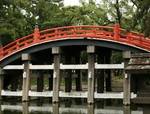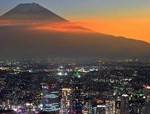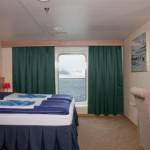Russia travel, Trans Siberia railway from Beijing
From one red city to another. Hop on at Moscow, rail it express to Beijing or choose from a range of adventures that offer stops at a range of ports of call including Yekaterinburg, Irkutsk and mighty Lake Baikal in Siberia, Ulan Ude – a curious outpost in Eastern Buryatia that embraces all things Buddhist, and Ulaan Baatar – an amazing moniker for what is the capital of Mongolia. Or go traditional on the original Trans-Siberian journey from Moscow to Vladivostok on our 19 day adventure.
Russia travel Trans Siberia railway from Moscow
Cross a third of the globe on board the legendary Trans-Siberian. From one capital city to another, we offer a heady range of adventures from Beijing to Moscow, ranging from 9 to 18 days, stopping off at some fascinating destinations en route. Discover Ulaan Baatar, the capital of Mongolia, and the beautiful Terelj National Park where you can camp out in a ger! Ulan Ude, a remote Buddhist outpost in Eastern Buryatia, Irkutsk – the Paris of Siberia and the deepest lake in the world – Baikal and Yekaterinburg, the last resting place of the Romanovs.
Russia travel Voltage
Russia and Mongolia
Standard voltage is 220V, 50Hz AC. Sockets require a Continental or European plug with two round pins.
Russia travel China
Standard voltage is 220V, 50Hz AC. Chinese plugs come in at least 4 designs: 3-pronged angle pins as used in Australia; 3-pronged round pins as used in Hong Kong; 2-pronged flat pins as used in the USA; or 2 round narrow pins as used in Europe.
Pack a worldwide travel adaptor.
Russia travel Money
Russia
Russian Rouble – 1 Rouble = 100 Kopeks
The Russian Rouble is exchangeable only in Russia. Notes come in the following denominations: 10, 50,100, 500. Coins are also in circulation and come in the following values: 1, 2 and 5 Roubles and 1, 10 and 50 Kopeks.
US Dollars and Euros are the best currency for exchange. Bureau de Change and ATM machines exist in Moscow and St Petersburg (to a lesser extent in the provinces). Changing traveller’s cheques is cumbersome so avoid if possible and credit cards are rarely accepted outside the main cities.
Russian ATMs allow you to choose to withdraw currency in either Euros or Roubles and sometimes also USD.
Mongolia
Mongolian Tugrik (MNT) 1 Tugrik = 100 Mongo
The Tugrik is non exportable and money changing facilities are available in Ulaan Baatar and sometimes at frontier border points. The best currency to carry for exchange into Tugrik is the US Dollar. Please note that the USD is sometimes the method of payment for optional activities, for example, horse-riding at Terelj NP.
China
Chinese Yuan (CNY) 1 Yuan = 10 Jiao
Pound Sterling, US Dollars, Euro and other major currencies can be converted into Chinese Yuan locally, or you can purchase currency in advance. Previously, there were two types of currency – one for locals, called Renmimbi and one for foreigners which came in Foreign Exchange Certificates. Thankfully, this old system has now been abolished and both Chinese and foreigners use the same currency known as Yuan.
General Money Guide:
Bring clean, unmarked cash in US Dollars (not $100 bills as they’re hard to exchange) for your Trans-Sib adventure.
When changing money, ID is required.
Ensure you have enough in cash aboard the train, or for example, at Listvyanka on Lake Baikal’s shore.
Take a mixture of cash and credit/debit cards (for ATM usage). Changing traveller cheques is cumbersome and complicated and only recognised by the very large banks. Avoid if possible.
Credit card acceptance is becoming more common, though cash is still the norm in a most establishments.
Russia travel climate
Russia
In European Russia, summer days from late May to early September are warm and very long. At midsummer in St Petersburg there is no real darkness. Average temperatures range from 18-25 C. Autumn is brief and by the end of October, winter sets in, bringing with it lots of snow and extremely low temperatures. Spring arrives with a vengeance, heralding the great thaw, in late March and April.
Mongolia
As Mongolia is located in the northern hemisphere, temperatures are not unlike those in Russia and northern China (see below). Summer in Mongolia is short but bright. Expect temperatures in the mid 20s celsius. Winter is especially cold, so it is important to wear suitably warm clothing and shoes capable of coping with snowy conditions. Due to extreme weather, clients undertaking a Classic adventure at this time of the year will be accommodated in permanent accommodation and not Mongolian gers.
China
China has a great diversity of climates. The northeast experiences hot and dry summers and bitterly cold winters. The north and central region has almost continual rainfall, hot summers and cold winters. The southeast region has substantial rainfall, with semi-tropical summers and cool winters. If visiting the north, pack heavyweight clothing and sturdy boots for a winter visit and lightweight clothing for summer. If visiting the south, mediumweight winter clothing will suffice, along with lightweight cottons for summer.
Average Max Temp °C
| City | Jan | Feb | Mar | Apr | May | Jun | Jul | Aug | Sep | Oct | Nov | Dec |
| Moscow | -8 | -8 | -2 | 9 | 15 | 18 | 19 | 20 | 15 | 9 | -5 | -10 |
| Ulaan Baatar | -16 | -11 | -2 | 8 | 17 | 22 | 23 | 22 | 16 | 7 | -4 | -14 |
| Beijing | 1 | 4 | 11 | 21 | 27 | 31 | 31 | 30 | 26 | 20 | 9 | 3 |
Russia travel Time
One of the most disorienting aspects of the Trans-Siberian trip is working out what time it really is! The important thing to remember is that all long-distance trains run on Moskovskaya Vremya or Moscow Time in Russia, the abbreviation for which is MB in Cyrillic or MV in English. It has to be this way in a country that has 11 time zones.
All timetables, station clocks, train clocks and announcements are on Moscow Time. Clocks may have the letters ‘MB’ underneath – which signify the clock is operating to Moscow Time. Having gotten used to Moscow Time, you’ll then have to get used to Mongolia Time and Beijing Time.
Mongolia has 2 time zones, though you’ll only pass through one, and China has 3 time zones, though only Beijing Time is used for all trains. To further assist you, take a look at the time guide for stops on the Trans-Siberian route below:
MV = Moscow Time.
| London 12:00 GMT | Moscow, St Petes 15:00 GMT+3 |
| Perm 17:00 GMT+5 MV+2 | Yekaterinburg 17:00 GMT+5 MV+2 |
| Novosibirsk 18:00 GMT+6 MV+3 | Krasnoyarsk 19:00 GMT+7 MV+4 |
| Irkutsk 20:00 GMT+8 MV+5 | Ulaan Baatar 20:00 GMT+8 |
| Beijing 20:00 GMT+8 |
Russia travel food on the Trans-Siberian
Contrary to popular belief, you won’t starve! All the main Trans-Siberian trains have a Buffet/Dining wagon, open generally from around 0900-2100hrs local time. It’s a sociable place to meet, hang out, drink beer and eat. The service is provided by whichever country you are crossing. Food is cafe style at reasonable prices. Don’t expect an extensive menu.
Typical meals in the Russian Buffet/Dining wagon include ham and eggs for breakfast, schnitzel and potatoes for lunch or dinner, with soups and salads for starters. The Buffet/Dining wagon also sells beer, Russian champagne, vodka, chocolate and snacks. The Mongolian Buffet/Dining wagon (Ulaan Baatar – Zamyn-Uud only) will invariably offer rice and mutton and other dishes. Whilst the Chinese Buffet/Dining wagon will offer Chinese staples – noodles and suchlike.
A cart is sometimes wheeled through the wagons with snacks and drinks for sale, too. You can also buy food including fruit and vegetables, from the many vendors on station platforms when the train stops. Watch your stomach, though. Perhaps limit the platform-vended snacks to bread, fruit and non-meat items.
Russia travel Drink
Russians consume an average 12 litres of pure alcohol a year, which is three times the average for the rest of the developed world and also testament to how good the vodka here really is! Russian beer is also very good and inexpensive. Alcohol such as vodka is also popular in Mongolia (a hang-over from Soviet times) and beer is very prevalent in China.
Drink only bottled water, it’s inexpensive and available everywhere, as are soft drinks. Tea is very popular in Russia, Mongolia and China. We recommend that you pack coffee and tea bags, there is a Samovar (fire powered kettle/hot water urn) onboard the train, so you can make your own drinks.
Russia travel Tipping
Tipping is a matter of choice and should only be undertaken if the food and service has been pleasing. Standard practice in restaurants is to leave a cash tip of around 10% of the bill total. Merciless train porters and baggage handlers often expect exorbitant tips for lugging your baggage a short distance. Our advice is to travel with a backpack/rucksack. If you’d like to express your appreciation to any of our local representatives, we suggest a tip somewhere in the vicinity of about USD $2 per person per day.
Russia travel health
It is recommended that you be vaccinated against Polio, Tetanus, Diphtheria, Typhoid and Hepatitis A. If visiting Yekaterinburg in Russia between May and August, it is also advisable to be vaccinated for Tickborne Encephalitis. This information is only intended as a guide and recommendations can change so please consult with your local healthcare provider.
Upset stomachs and diarrhoea are a common occurrence amongst travellers in foreign countries. Take care with food and drink. Drink only bottled mineral water. Pack a high factor sunscreen and mosquito repellent (if visiting in summer) and a personal first aid kit containing anti-diarrhoea and headache tablets, plasters ( aka Band aid!), antiseptic cream, handy wipes etc. If you are currently prescribed medication, take an ample supply. Dispensary items of the type you are used to may not be available Russia, Mongolia or China.











